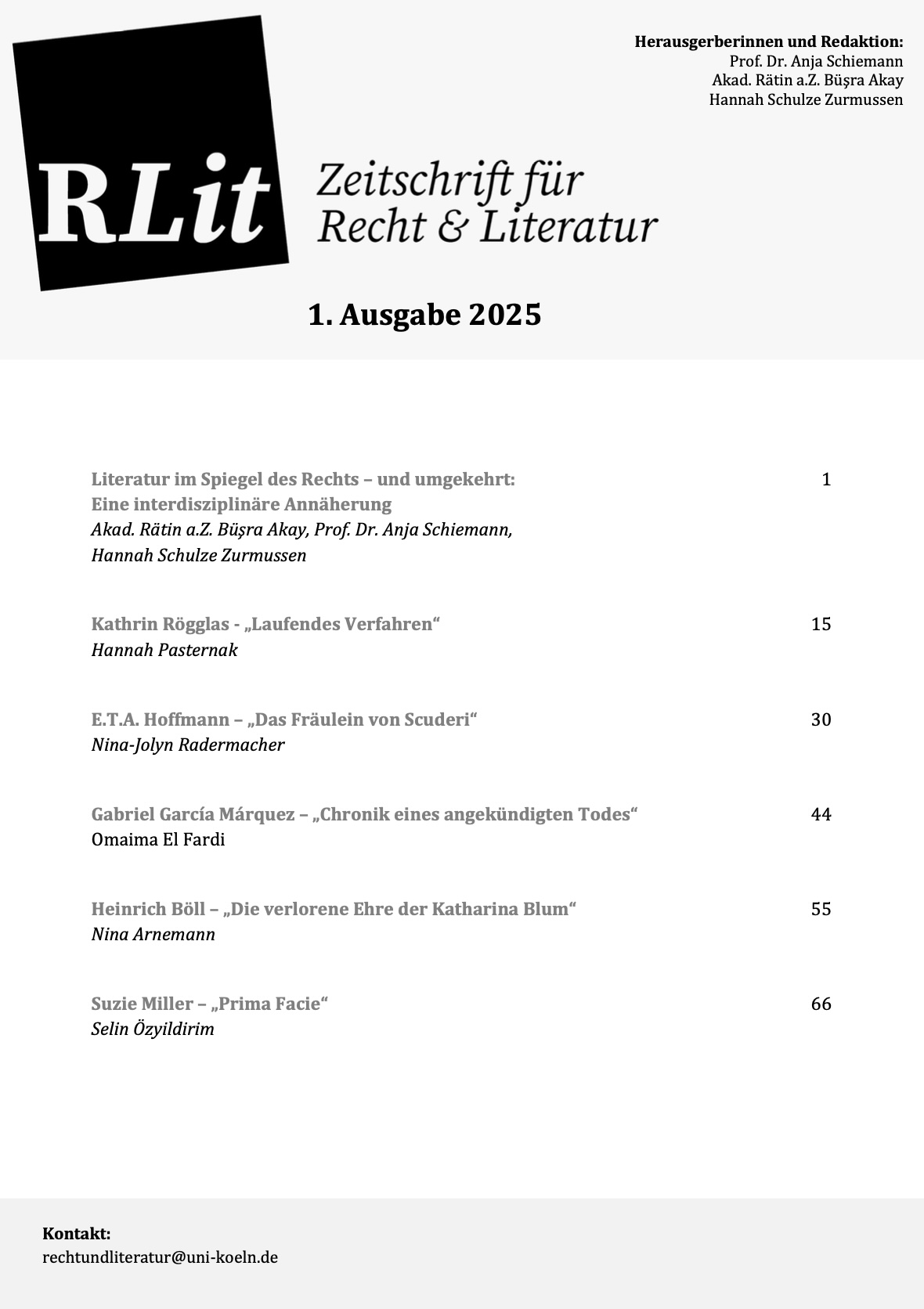Abstract
Der Beitrag analysiert Gabriel García Márquez’ Roman Chronik eines angekündigten Todes unter soziokulturellen und rechtstheoretischen Gesichtspunkten. Im Zentrum steht die Frage, warum der Mord an Santiago Nasar trotz öffentlicher Ankündigung nicht verhindert wurde. Dabei werden die gesellschaftlichen Mechanismen kollektiver Passivität, die patriarchale Ehre als soziale Verpflichtung und die Rolle traditioneller Männlichkeitsbilder herausgearbeitet. Die Täter erscheinen als Getriebene kultureller Normen, ihre Tat als durch Tradition legitimierte Pflicht. Anhand der Neutralisierungstheorie und des Etikettierungsansatzes wird die Zuschreibung von Schuld und Verantwortung analysiert – nicht nur für die Täter, sondern auch für die Dorfgemeinschaft. Der Roman dient so als literarisches Modell zur Reflexion über soziale Mitverantwortung im Rahmen eines sog. Ehrenmordes.
This article explores Gabriel García Márquez’s novel Chronicle of a Death Foretold from a socio-legal and cultural perspective. It investigates why the murder of Santiago Nasar, despite being publicly announced, was not prevented. Central to the analysis are mechanisms of collective inaction, patriarchal notions of honor, and traditional models of masculinity. The perpetrators are portrayed as bound by cultural obligation, and the act of murder is framed as a duty legitimized by tradition. Utilizing the theory of neutralization and the labeling approach, the article examines how guilt and responsibility are distributed—not only among the killers but also within the community. The novel emerges as a literary case study that challenges legal norms and reflects on societal complicity and the phenomenon of honor-based violence.

Dieses Werk steht unter der Lizenz Creative Commons Namensnennung 4.0 International.
Copyright (c) 2025 Recht und Literatur

